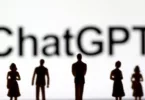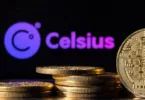Each day, as I prepare my son for daycare, I follow a routine of uttering seven words: “Hey Google, what’s the weather like today?” The outcomes of this now-established ritual dictate what he’ll wear, what additional clothing I should pack, and whether we’ll need a jacket for our bike ride.
Regardless of the method one uses to check the day’s weather forecast, it’s important to note that the medium providing this information isn’t physically measuring or forecasting the weather; rather, it’s conveying data and predictions from those who do so in an understandable format. The Internet plays a significant role in disseminating and conveying this information while also aiding meteorologists in collecting data from various parts of the world, including remote sensors, to enhance their predictions.
Meteorologists readily acknowledge that their forecasts aren’t always spot on. However, they do an impressive job given the multitude of variables they must consider, including hundreds that are beyond their control, to explain why it rained in one neighborhood but not in the next. The ability to access such localized weather information is a modern marvel that many of us tend to take for granted.

What is the current state of the internet?
Given society’s increasing dependence on reliable, secure, and faster Internet connectivity, measuring the Internet’s performance is equally crucial and challenging, akin to forecasting the weather or measuring climate trends. This is why we introduced the Internet Society Pulse, which, in many ways, functions like your weather app, offering an overview of the Internet’s health, availability, and development.
While the Internet transcends geopolitical boundaries, it’s natural for people to be curious about the strengths and weaknesses of the Internet in their own countries. The Internet Society Pulse Country Reports help address this curiosity by consolidating and providing context for the four Pulse research themes for every country, state, and region across the globe.
What Constitutes a Country’s Internet Health?
Without delving into the data, it’s challenging to make assumptions about the overall condition of a country’s Internet, whether it’s in good or poor health. It might appear robust due to fast and readily available services, but numerous factors come into play when evaluating a country’s Internet health. We have categorized these factors into three main areas:
- Accessible Internet Environment
An accessible internet permits individuals and entities to freely utilize various technologies without the need for authorization and with minimal hindrances. Maintaining and expanding accessibility to the internet fosters innovation and ensures its adaptability for future uses. An accessible internet is one that is easy to access and utilize, offering straightforward connectivity and service usage.
2. Internationally Linked Infrastructure
An internationally linked internet promotes inclusivity. It enables networks and users to interconnect without geographical limitations. Enhancing internet connectivity on a global scale enhances its worth for all participants, serving as a communication, educational, and commercial tool.
3. A Secure and Reliable Internet
A secure internet is resistant to attacks on its infrastructure, ensuring robust service delivery to its user community. A trustworthy internet fulfills user expectations by offering a resilient and dependable foundation for applications and services.
The Pulse Country Reports present data compiled by Pulse from various open sources, including APNIC Labs, Facebook, Google, ICANN, IIJ, ITU, Mozilla Firefox Telemetry, PeeringDB, and W3Techs. This data assesses the condition of the open internet environment, globally interconnected infrastructure, and secure, dependable internet for each country.
The Significance of Measuring the Internet Anticipating faults or potential attacks before they occur represents a crucial goal in internet measurement and operations. Network operators consistently monitor their networks’ performance, enabling swift responses to ensure customer satisfaction. Some internet measurement efforts aim to enhance the accuracy of assessing internet health at its periphery.
While the Pulse Country Reports do not yet provide this localized perspective, they take a step back to offer an overview of the collective health of all networks within each country. This broader viewpoint can be beneficial by:
- Policy and decision-makers can gain insights into which aspects of the internet require enhancement and can formulate policies to facilitate these improvements.
- Civil society organizations and journalists can use this information to advocate for increased investment in and enhancements to infrastructure and security in regions with low scores.
Taking the Philippines’ country report as an example, there are several areas that decision-makers and advocates can concentrate on to enhance the internet’s health and resilience in the country. These areas include:
- Expanding the internet user base.
- Enhancing the country’s internet resilience by investing in improved infrastructure, performance, security, and market structures.
- Encouraging service providers to diversify their international routes and establish local peering connections, as both are critical factors in bolstering the internet’s stability in the country.
- Encouraging content providers to secure the DNS that underlies their websites.
In essence, the Pulse Country Reports offer a broad overview of the internet’s condition, serving as a resource to guide the decisions of policymakers. These decision-makers can subsequently assess the identified weaknesses and implement measures to invest in policy and infrastructure enhancements, ultimately enhancing the internet for each country and, by extension, the global internet.
Who knows, in the future, when my son is grown and preparing his child for daycare, he might inquire of his smart device, “What’s the state of the internet today?”





